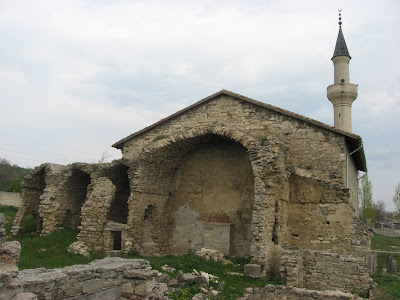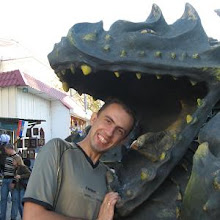One of the main purposes of our travel was to visit the Nature Reserve Karadag. So, the most of the third day we spent on its territory.
In the morning we left our camp near Echki-Dag and went to the town Schebetovka, which is located at the western edge of Karadag and lies on the road from Feodosiya to Sudak. So, if you go to Karadag by car, you will cross this town.
We entered Karadag through the coast village Kurortne, to the south from Schebetovka.
Here some photos from our visiting Karadag.
In the morning we left our camp near Echki-Dag and went to the town Schebetovka, which is located at the western edge of Karadag and lies on the road from Feodosiya to Sudak. So, if you go to Karadag by car, you will cross this town.
We entered Karadag through the coast village Kurortne, to the south from Schebetovka.
Here some photos from our visiting Karadag.
 The Golden Gate
The Golden Gate High rocks over the sea
High rocks over the sea Stone face looks into the valley of Karadag
Stone face looks into the valley of Karadag Ruins of the ancient volcano
Ruins of the ancient volcano Magnetic range
Magnetic rangeMore photos from this day of our travel you can find in online-photoalbums. They show our way to Karadag, rocks of Karadag, Karadag with the sea and other places in Karadag.















